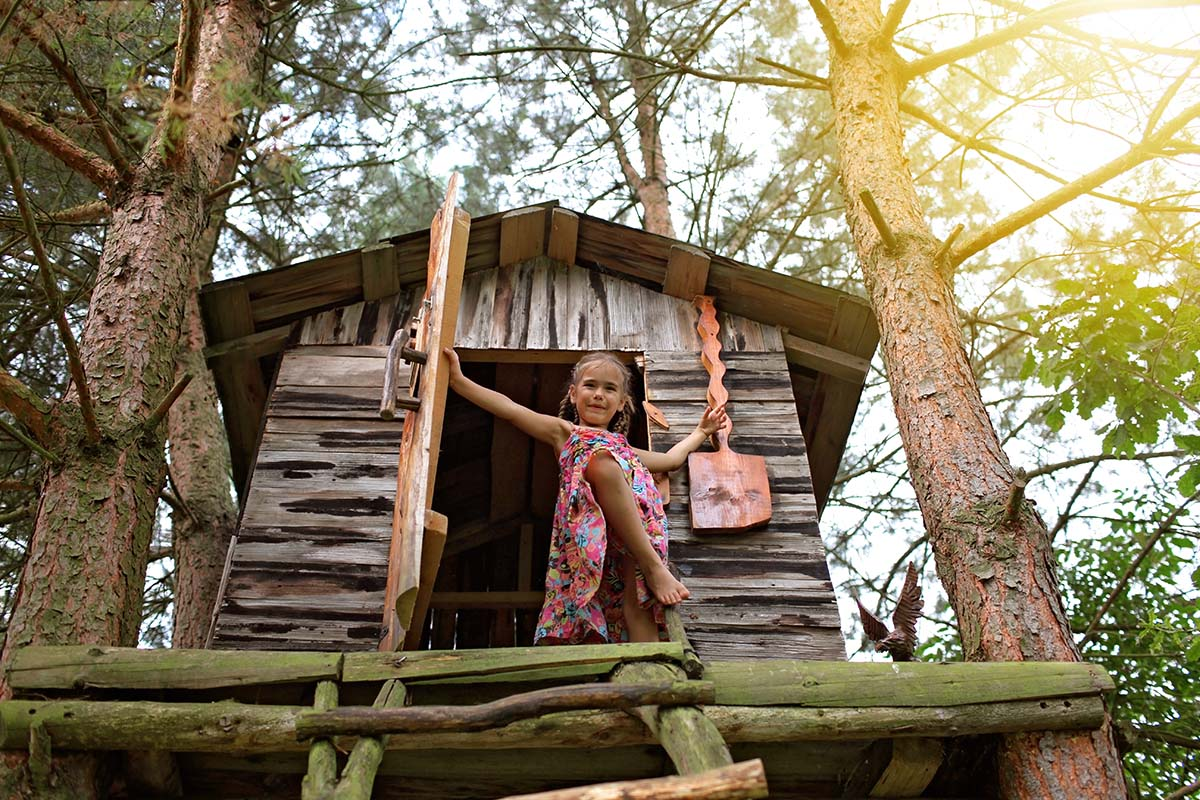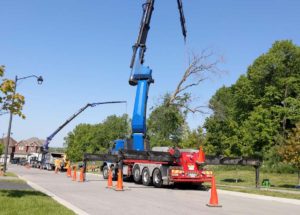Treehouses are a backyard staple. They’re the perfect place for children to hide away, imagine, and play. Plus, they aren’t just for kids. Adult-oriented treehouses can provide a haven for reading, meditating, or simply enjoying some peaceful quiet among the branches. Treehouses provide unique experiences and memories for everyone. Is one of your trees asking for an addition? We’re tree experts here at Advanced Tree Care, not carpenters or architects, so we can’t help you design and build that perfect treehouse. We can, however, provide our ISA certified expertise to help you determine the right tree(s) for building the perfect backyard treehouse. Read on to learn which trees provide the best base for a treehouse, what aspects to consider before you start building, and how you can ensure the tree supports the house for a long time.
The Right Tree(s) for Building the Perfect Backyard Treehouse
Before considering the size and scope of your new treehouse, you need to pick the right tree in your yard to support the new home. Most large deciduous and coniferous trees can support a treehouse. Of course, not all trees are created equal. Oak, beech, maple, ash, and cedar all have denser wood, so they can support the weight of a treehouse. Pine, poplar, and willow trees, however, have soft, pliant wood. These trees will wear and crack over time from the burden of a treehouse, and it will eventually collapse. This makes them unsuitable for treehouses. Similarly, never choose a tree on a hill or in wet soil. These will always have a higher risk of falling. Stick to a tree on level ground, with enough distance from other trees to ensure secure roots.
Building a Treehouse with Only Softwood Trees
If your backyard only has softwood trees which cannot safely support a treehouse, you don’t need to wait a few decades to grow a sizeable oak tree. An alternative is to build a treehouse near your preferred tree on stilt supports with the tree. Some might think this isn’t a “true” treehouse since it isn’t using the tree as its only structural foundation. However, it still provides a perfect raised retreat among the branches and is a great alternative when none of your trees are up to the task on their own.
Size Matters for Building the Perfect Backyard Treehouse
Along with tree species, the tree’s size is an important factor. A tree must be large enough before it can support even the smallest treehouse. The standard rule to follow: bigger is better. Hardwood trees with a diameter of at least 12 inches (30 cm) or a circumference of 38 inches (96.5 cm) are large and old enough to support a treehouse of 8 ft x 8 ft. A larger treehouse will require a thicker trunk, another tree, or stilts to provide additional support.
You will similarly want the tree to be tall enough. A tree should be taller than 16 ft (5m) for a treehouse. This ensures the trunk is large enough and will prevent the tree from visually shrinking with the addition of a treehouse. If a tree is too short, it will only appear even smaller with the addition of a bulky treehouse.
Choosing a Healthy Tree and Keeping it That Way
The other factor for picking the right tree is ensuring its health. Dead branches, yellowing leaves, cracks, pest damage, or oozing indicate something is negatively impacting the tree’s health. You will want to address any of those issues before establishing the tree as a structural foundation to your new treehouse. You will also want to monitor the tree for any of these signs afterwards.
Adding a treehouse can introduce additional stress to a tree, so you will want to ensure you minimize its impact on your tree. Avoid cutting into or removing any boughs. This can expose the tree to diseases or pests and will also diminish the tree’s crown, reducing its long-term health and aesthetic appeal. A proper treehouse construction will minimize bolts to reduce holes made in the tree’s protective bark. This construction will be built around the tree rather than tightly wrapping around the trunk and branches. This gives the tree room to continue to grow. Only use rope supports on trees with thick, strong bark, otherwise the rope will wear on the bark over time. Overall, a healthy tree won’t reject the addition of a properly built treehouse, but it will still be subject to other potential health concerns over its life. Continue to monitor its health, and contact us for any help in diagnosing and consultation in caring for your tree.
Start Building the Perfect Backyard Treehouse
With this information, you can now pick the right tree(s) to provide the foundation for building the perfect backyard treehouse. You will want a tree that is big, strong, and healthy for that ideal arboreous abode. If you’re unsure whether your tree meets the criteria for a proper treehouse, contact the certified team at Advanced Tree Care to be sure.






